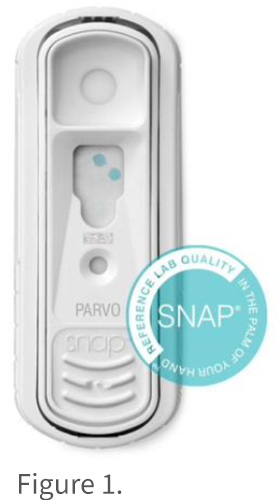30 Apr 2024
Vanessa Woolhead describes the case of a three-month-old patient, which Irby and Neston Veterinary Surgery team worked hard on.

Rocky the kitten.
Rocky, a three-month-old kitten, initially presented to senior veterinary surgeon Laura Pinnington at Irby and Neston Veterinary Surgery, Cheshire, in August 2023.
A few weeks prior to acquiring Rocky, one of his owner’s previous young cats had died at approximately 18 months old. Via blood tests, he had been diagnosed with pancytopenia (low red and white blood cells) and had deteriorated quickly. Neither of the owner’s existing cats had been vaccinated against feline panleukopenia, herpes, calicivirus or leukaemia viruses.
Rocky came from a nearby cat rescue centre. He presented to Laura with a four-day history of vomiting and reduced appetite, having been in the owner’s possession for less than a week. He was unvaccinated, though
Rocky had been neutered approximately 10 days prior to presentation, which was uneventful.
Upon examination, Laura found Rocky was underweight with a body condition score of only 3/9 (ideal score 5). He was also pyrexic (fever) with a temperature of 40.6°C (normal 38.3 to 39.2°C).
Blood tests were performed in-house at Irby and Neston Veterinary Surgery, which revealed pancytopenia, including a non-regenerative anaemia – indicating bone marrow dysfunction, and mild hyperbilirubinaemia – potentially suggestive of sepsis (infection): non-regenerative anaemia (low red blood cells); haematocrit – 0.27L/L (Reference interval, RI 0.30-0.52); reticulocytes – 29.7 x 109/L (RI 3-50); leukopenia (low white blood cells); neutrophils – 0.80 x109/L (RI 2.30-10.29); lymphocytes – 0.71 x109/L (RI 0.92-6.88); eosinophils – 0.07 x109/L (RI 0.17-1.57); hyperbilirubinaemia (jaundice); bilirubin – 18µmol/L (RI 0-15).
One treatment path considered was a course of steroids to target possible immune-mediated bone marrow destruction.
An urgent request for advice was sent to Vet Oracle’s telemedicine service, and was picked up by the author (an internal medicine specialist).
While further investigations were made and the Vet Oracle advice request was pending, Rocky was started on broad-spectrum antibiotics – including amoxicillin clavulanate in light of the marked neutropenia (low white blood count).

The author suggested performing a faecal canine parvovirus antigen test – IDEXX SNAP Parvo test (Figure 1) – to screen for feline panleukopenia virus. This was a method of testing in cats that Irby and Neston
Veterinary surgery colleagues were previously not aware of, although the test was held in practice.
Vet Oracle also provided supporting scientific papers and additional resources for further reading on feline panleukopenia virus and the IDEXX SNAP Parvo test to help develop the practice’s knowledge. Irby and Neston colleagues found this helpful and it counted towards their CPD.
Rocky’s IDEXX SNAP Parvo test result came back positive. This helped Laura and the author to achieve a full diagnosis.
While there is no specific treatment for this virus, supportive treatment – especially for the neutropenia – was broad-spectrum antibiotics, along with full disinfection of the home environment to try to reduce the virus’ spread to the other cat in the household. Laura was also able to restart the aforementioned vaccination courses for the owner’s other cat.
Had Rocky not been fully diagnosed, the prognosis would have been poor – if the correct treatment had not been given and steroids avoided. He would have been very susceptible to any infection. The previous young cat in the home had died with similar signs.
The full diagnosis also enabled the owner to communicate with the rescue centre, so that it was aware of the presence of feline panleukopenia virus and able to introduce disinfection and preventive methods moving forward to help protect other cats.
Following a two-week course of antibiotics, Rocky’s haematology tests were repeated. Bloods at this point revealed: evidence of reticulocytosis (red blood cell regeneration) and resolution of the anaemia; white blood cell counts all within normal limits. At this point antibiotic therapy was ceased.
Two weeks later Rocky the kitten started his primary vaccination course. After this point, he made a full, uneventful recovery.